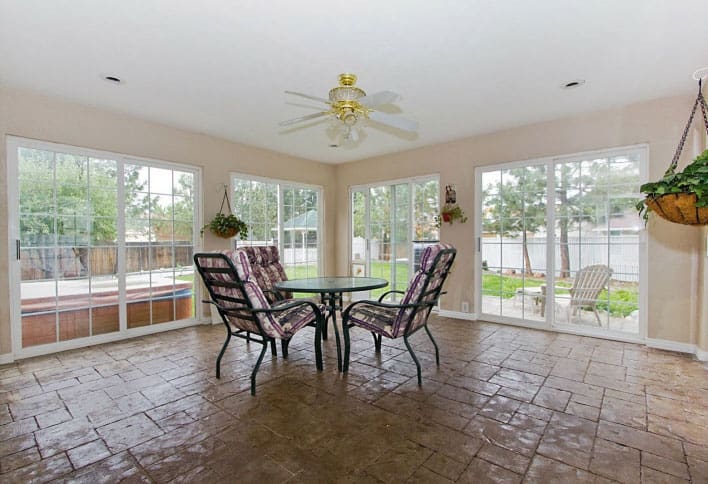How can you keep your sunroom warm and comfortable during the fall and winter months? The window-filled room is the ideal place to spend a spring or summer day. But in the cooler months, it may seem drafty. Whether you recently built a sunroom addition or have never used this room in the fall or winter, take a look at the do’s and don’ts of home heating.
Do Start With the Windows
A full windowed wall can make your sunroom feel cold and drafty in the fall or winter. Even though the windows won’t protect the interior space in the same way an insulated wall could, you don’t have to settle for a constant chill. According to the U.S. Department of Energy, window-related heat loss accounts for 25 to 30 percent of the average home heating energy use.
To reduce the energy loss and high utility prices and improve a drafty indoor sunroom, upgrade the windows. Choose multi-pane, gas-insulated models. Not only will these help to decrease your sunroom heating costs, but high-quality energy-efficient windows can also reduce the risks of premature wear or damage to your HVAC system.
The extra force your heater needs to keep a room with drafty or uninsulated windows warm puts stress on the system. This can cause your furnace to fail before it should – resulting in repair or replacement costs.
Don’t Only Use Temporary Heating Methods
Does your sunroom have high-quality windows? Did you recently upgrade the glass? But is the room still chilly? What’s going on? Some sunrooms don’t have heat sources – especially if the room is an addition. The ductwork from the rest of your home may not extend into this room, leaving it without heat in the fall and winter.
Space heaters and similar temporary options are easy to use and can quickly warm your sunroom space. But these types of heaters won’t solve the cold weather problem. Not only are space heaters a temporary fix for a permanent problem, but they are often inefficient and costly ways to warm an indoor area.
Beyond excessive energy use and high home utility bills, space and other portable heaters may pose safety risks. Space heaters were responsible for nearly 1,200 fires per year from 2008 to 2010, according to the U.S. Consumer Product Safety Commission (CPSC).
Do Talk to a Professional
If space heaters aren’t the best or safest way to heat your home’s sunroom, how can you make this chilly space usable in the fall or winter? Instead of closing off your sunroom, open it up – to the heating system.
Consult with an HVAC professional to learn more about the best heating option for your sunroom. The most popular picks include:
- Forced air heaters. Does the ductwork already extend into your sunroom? If the room has ducts, ask the pro if you can connect it to your home’s central forced air heater. Sunrooms without existing ducts can still use a forced air heater. But you will need to pay extra for renovations and installation.
- A boiler and radiator. Some homes don’t have ducts. Instead, they may have a hot water boiler and radiators in each room. If you build a new sunroom and have a boiler, talk to the contractor about extending this system before you start construction. You will need to install pipes and radiators to supply the room with hot water heat.
- A ductless heat pump. Like the name implies, this system doesn’t require ducts. Also known as a mini-split system, this type of ductless heater includes an indoor air handler and outdoor unit. The HVAC tech can mount the air handler on the wall, providing plenty of heat to the sunroom.
If you’re not sure which system to choose, consider the primary purchase, installation, and use factors. These include your heating budget; the initial costs of the unit, additions, accessories, and installation; maintenance; wall space; and your home’s existing system.
Do you need a new heating system for your sunroom? Contact Steele Brothers Heating, Inc., for more information.

